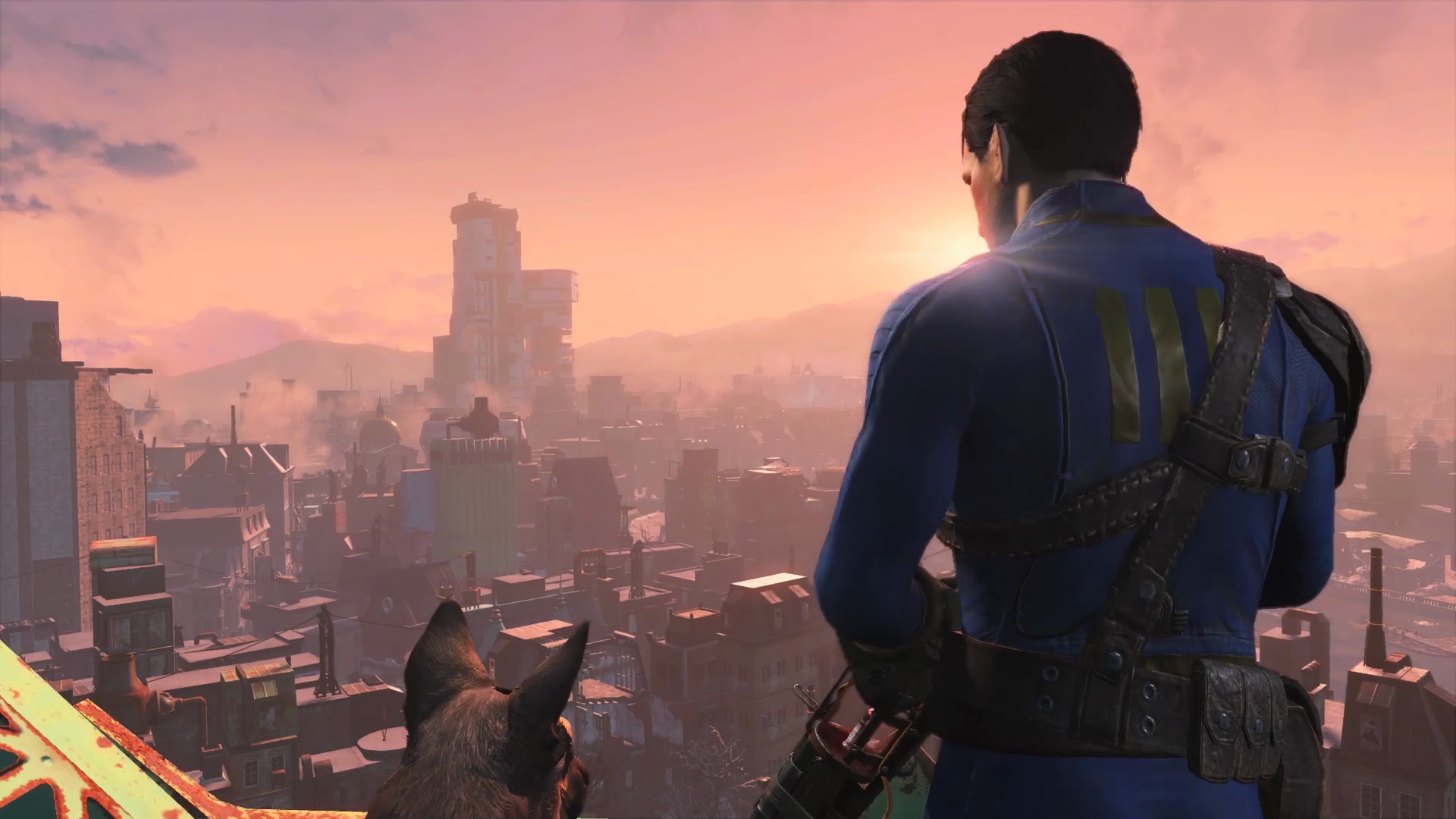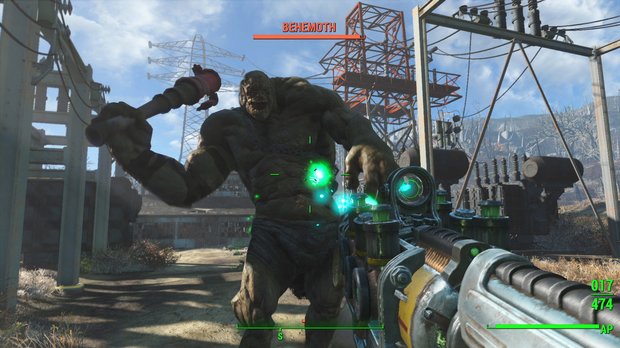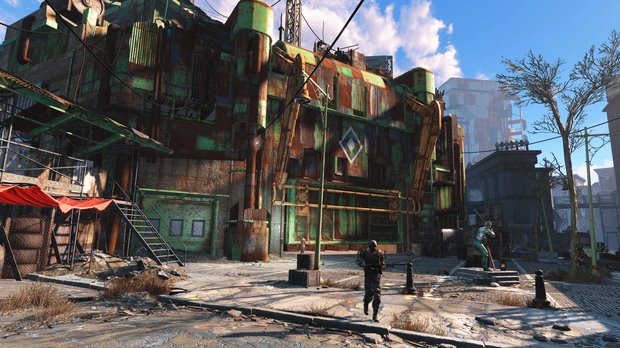Fallout 4's biggest upgrade isn't visuals or scale. It's a real sense of 'being there'
Fallout 4 looks like one hell of an upgrade from its last-gen predecessors. I say that as a man who put a lot of time into Fallout 3, including one particularly legendary/troubling-in-hindsight 15-hour stint, and vastly more cumulative play time before even (accidentally) stumbling upon the main plot. Very long story short, I spent a lot of time in the Capital Wasteland. For all of its cold, irradiated decay, I just loved being in that place. But after seeing a fair amount of Fallout 4, and talking to the people behind it, I now feel like I wasn’t really there at all.

See, in comparison to Fallout 4’s Boston-set Commonwealth, Fallout 3’s wasted Washington no longer feels like the rich, expansive, living world I thought it was at the time. In comparison to Fallout 4, it now feels like a sterile, miniature lansdscape made of cardboard and stickytape.
The sense of presence is the thing. It’s a vastly under-rated talking point in the discussion of convincing game worlds, and not something you create with the broad-strokes flourishes of game design. It’s a product of the little things. The details. The small, innocuous elements of being a real person in a real place that we rarely pay attention to, day-to-day, yet which scream like a klaxon horn made of angry seagulls when they’re missing from a simulation.
In hindsight, Fallout 3 is a game of great, isolated areas and moments, held together with a connective tissue of suspended disbelief. Conversations are text-clicking stare-outs with vocal mannequins, glorified versions of old-school RPG character portraits whose stumbling attempts at being real boys and girls make them only more creepily artificial. Combat is almost a great hybrid of real-time FPS and strategic, quasi-turn-based skillshots, but in truth only half of that equation holds up, shoot-outs turning into clumsy feats of panicked back-pedaling whenever you don’t have VATS ready as a time-stopping safety net. Fallout 3 might look like an FPS in screenshots, but that stiff, clunky aiming means that the in-game reality isn’t much more dynamic than those still images themselves.

Even the disturbingly compulsive exploration can suffer from a sense of disconnection at times. Limited scope for interaction can make your character feeling more like a roving camera in first-person play, and the endearingly wonky animations of the third-person view do nothing but take a sledgehammer to immersion. Fallout 3’s scale, scope, and brilliant, surprising tonal variety make it an undeniably immersive cumulative experience, but the moment-to-moment stuff? It all feels a bit robotic, a mechanical means to a more enjoyable, holistic end.
So far, Fallout 4 does not feel like that at all. All the usual new-gen upgrades are present and correct of course; grander scale and increased graphical fidelity are to be expected. But what really hits me between the eyes with a big bolt of excitement is everything in between.
First up, that boosted, red-and-blue drenched colour palette isn’t just to combat criticisms of F3 as an exercise in grey and brown. That’s a large part of it, of course, but it’s also there to make Fallout 4 feel more real. Yes, we expect the apocalypse to be painted in all shades of Dulux’ premium drab range, but the fact is that that’s just a stereotype we’ve invented and taught ourselves to believe, over years of games that confused ‘gritty’ with ‘grey’, just because. Look out of your window. Count the colours you see. That’s what the world looks like, and it wouldn’t look too different if it was partly knocked down and rebuilt with the same parts.
Weekly digests, tales from the communities you love, and more

Nukes aren’t paint bombs. Dust gets swept up. People clean, and tidy, and rebuild, and life goes on. Aesthetically and thematically - this is, after all, a game about a plucky, optimistic, ‘50s inspired civilisation that picked itself up after a global nuclear pounding - Fallout 4’s world is already vastly more real than Fallout 3’s, and that’s before you even get into the much more intricate, more organic modelling of its environments and various detritus.
Then there are the things you do in those environments. And here, we really have to talk about combat. In those still-frames, it looks immediately familiar, but in motion, Bethesda’s acquisition of id Software and MachineGames becomes obvious. Both the House of Doom and the rebuilder of Wolfenstein have helped to design Fallout 4’s shooting, and the result is much smoother movement, with more natural momentum and intertia, and greater nuance. As Joe points out in his combat overview from Gamescom, RPG stats and levelling disparities will still govern the ultimate effectiveness of your actions, but the point is that it really feels like this time around they’ll be your actions, rather than a twitchy, lumpen approximation of your intent.
But it’s not just about the obvious, big changes. It’s about everything inbetween. The new shooting looks immensely more tactile – emphasised further by more intricate level design that really makes the most of the newly legitimate FPS qualifications - but it’s amplified exponentially by Fallout 4’s ambient improvements. Dogmeat, for example, now the almost-living, almost-breathing personification of a developer’s real-life dog, is a constant, dynamic conduit between player character and game-world.

As a startlingly life-like, autonomous companion reacting naturally to every moment of threat, intrigue, interest, and surprise – but crucially, at a range expanded from your own point of view – s/he adds greater reach both to your own perception, and the feedback of the world coming back at you. Like a big, cute, furry radar expounding blips of pure ‘being there’. On paper, his/her abilities are similar to those in Fallout 3, but the sheer increase in life and realism in the beast, in conjunction with the seamless, flowing ability to issue very specific, point-and-go commands on the fly, changes the relationship for the far more intimate.
Factor in your newly voiced character’s various yelps, grunts, comments and musings when doing the most innocuous of things – exploring, discovering, picking locks, dealing with traps, you’ll react to all of it now – and for once in a modern Fallout game, you have a world you’re an active, reactive part of, not just observing. Same goes for the entirely new conversation system, which ‘simply’ has events happen around you in real-time, without a break. Events which you’re free to walk away from or shoot in the face, expressing your will in real-time, direct from sofa to virtual Boston, and having the repercussions follow suit in the opposite direction.
And again, all of this ties thematically back into what Fallout 4 is all about. I speculated at the time of the game’s announcement that its world looked unexpectedly civilised, almost as if humanity was getting back on its feet. There are newly rebuilt skyscrapers. There are airships. There are farms. There’s clean water, and the cities are serviced by newspapers. Where Fallout 3 was about exploring the shell of a dead world, traversing a place in mourning for what it once was, Fallout 4 is a world looking forward, not back.

Where once your quest was to repair the ecosystem in order to deliver an echo of normalcy, a tinge of hope for survival, water is now plentiful, and everyone’s doing just fine, thank you very much, rabid Ghoul attacks aside. There’s no pining for a life long gone. There’s just this life. It’s normal. It’s now. It’s just the way things are. It simply makes sense that Fallout 4 should be concerned with involving you in it, in making you an active part of the here and now. And if that also delivers a game full of all of the series’ familiar joys, but which plays a hell of a lot better in a hundred tiny but important ways, then all the better.



